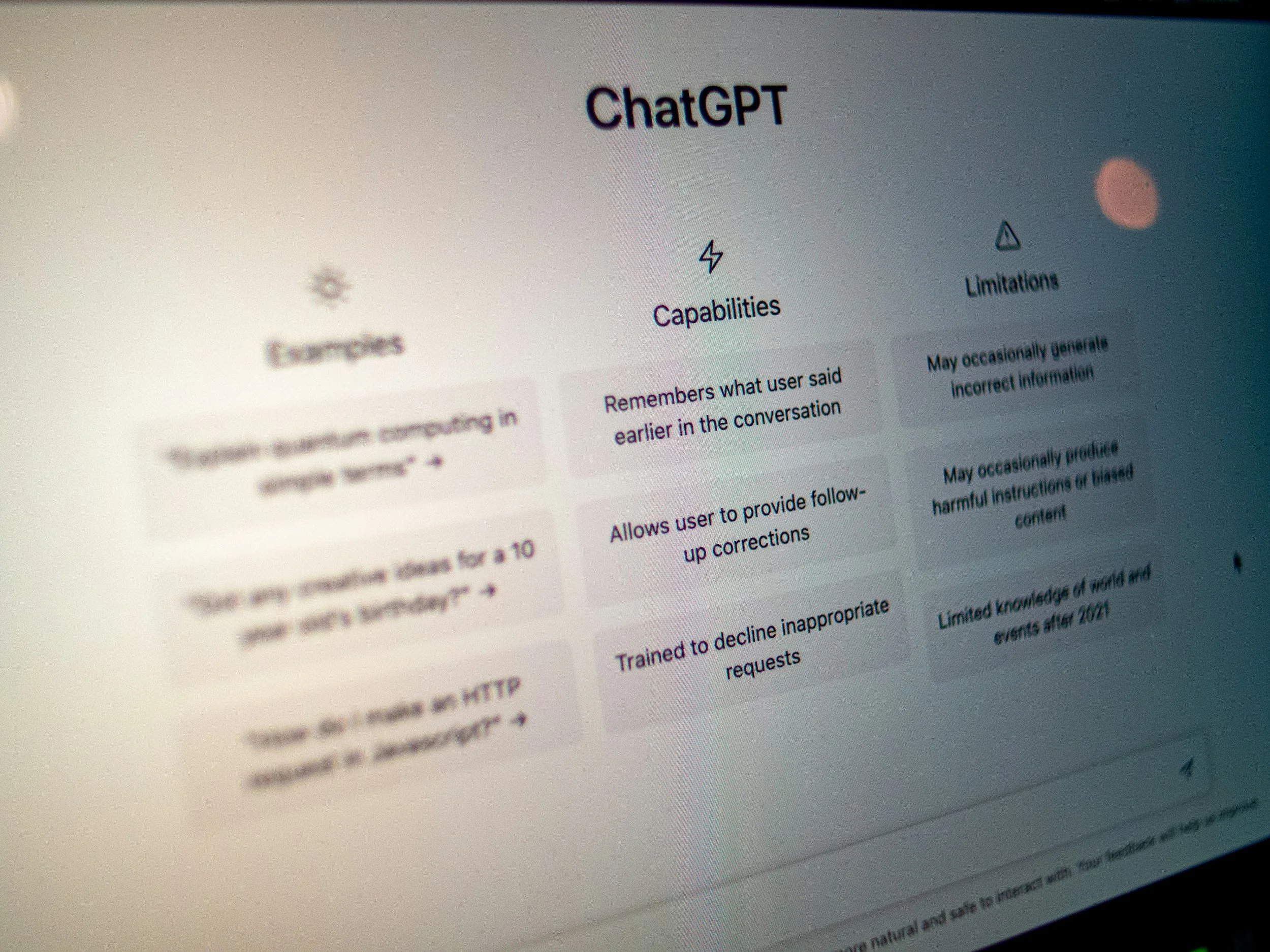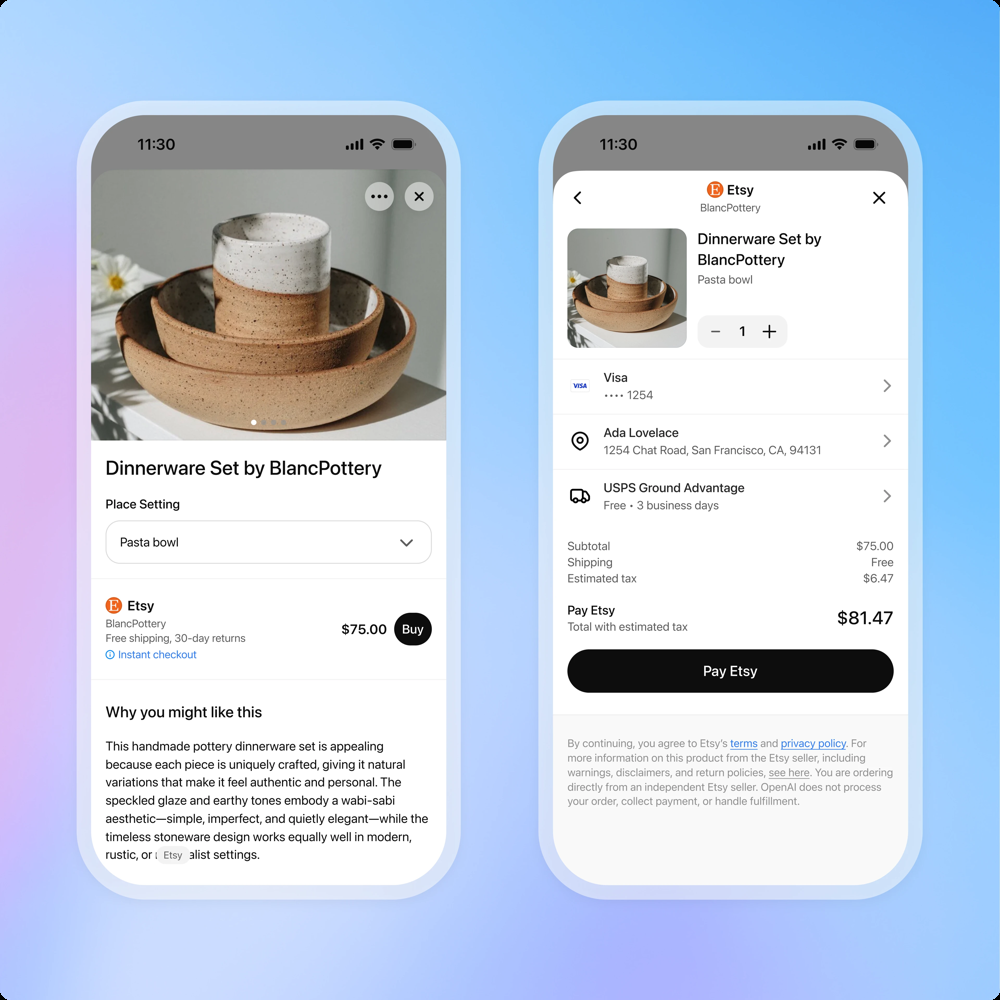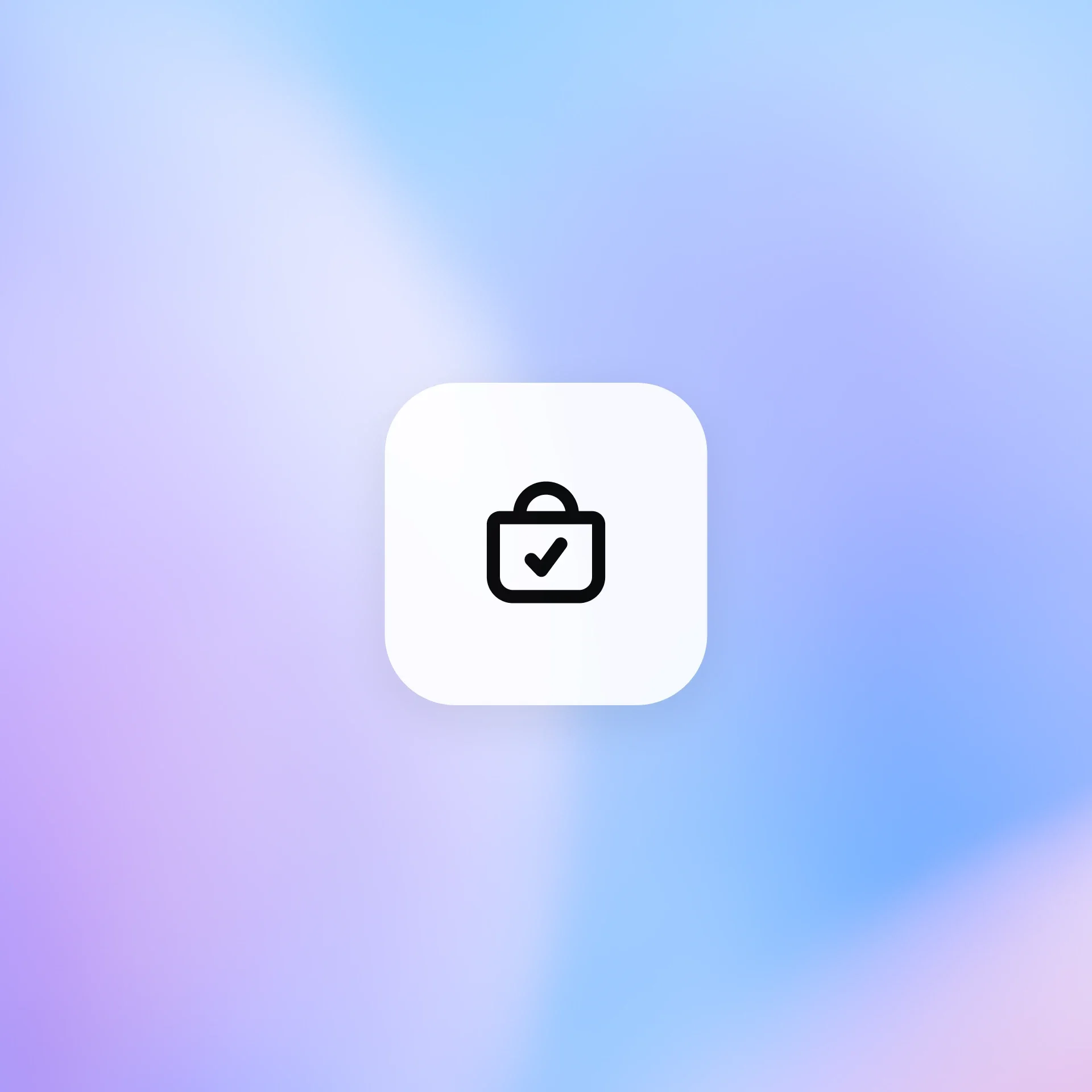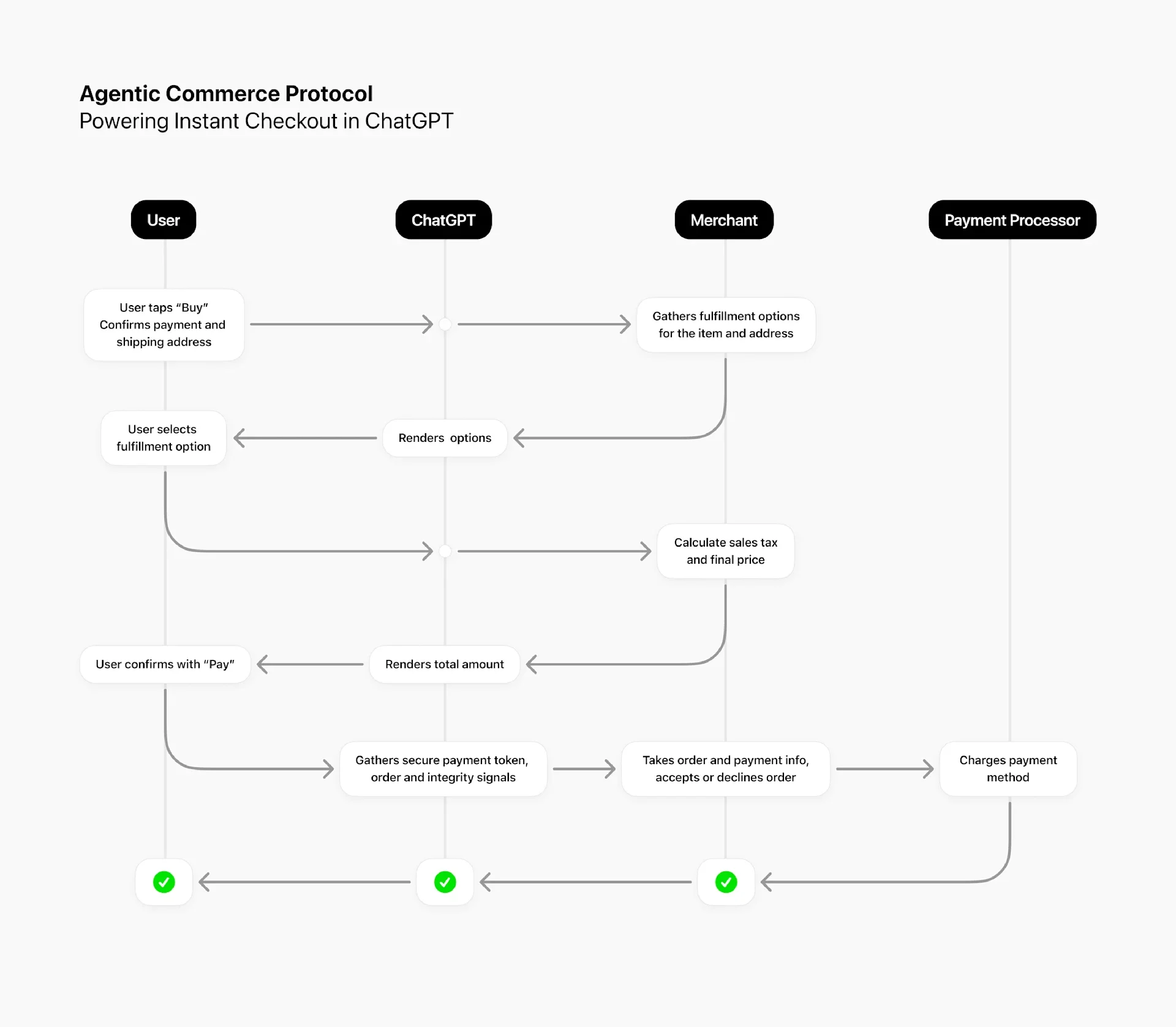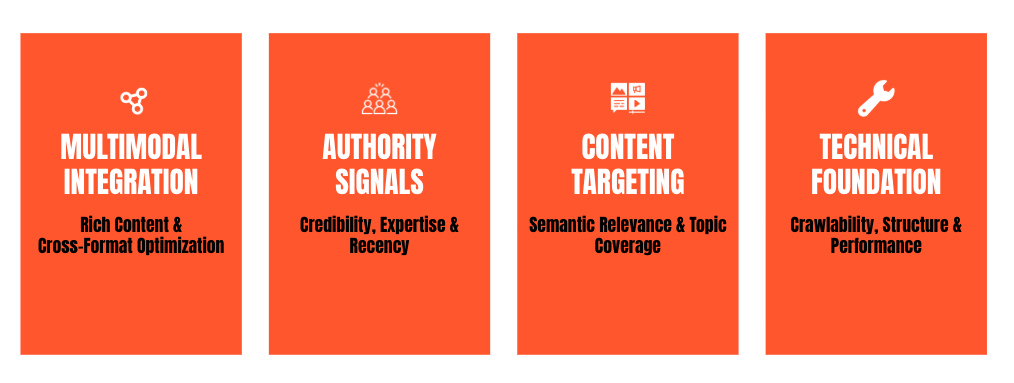Guide to optimising for GPT CHeckout
GPT-powered search and checkout is the biggest leap since the rise of search engines. Optimisation now means being discoverable, relevant, and instantly transact-able in conversational AI. This guide covers how GPT Checkout reshapes customer journeys, and the strategies you need to stay ahead in the new era of digital discovery.
Optimizing for ChatGPT Instant Checkout — Marketing & SEO Playbook
This guide is designed to be your go-to playbook for ChatGPT Instant Checkout.
It brings together:
Official sources - OpenAI’s announcements, technical documentation, and partner integrations.
Trusted commerce platforms - Insights from Shopify, Stripe, and Etsy.
SEO and AI thought leaders - Early observations on AI Optimization (AIO) and AI commerce best practices.
Brand examples - From Etsy artisans to Shopify who is leading the race.
Our goal: to give marketing and SEO teams the clearest, most actionable understanding of how ChatGPT Checkout works today, where it’s going, and how to optimize for it.
Use this guide to:
Understand the technology and ecosystem behind ChatGPT Checkout.
Learn from early adopters and brand experiments.
Get step-by-step recommendations for discovery, conversion, and data integration.
Prepare your team for the next wave of AI-driven commerce.
📖 Whether you’re at a global brand or an emerging D2C shop, this is everything you need to stay ahead as search shifts from links to conversations and transactions.
Executive Summary
ChatGPT now supports Instant Checkout, allowing users to discover products and complete purchases directly in a chat. For brands, this creates a new organic discovery and conversion channel. Success hinges on:
(a) clean, machine-readable product data;
(b) participation in OpenAI's merchant ecosystem (feeds + checkout); and
(c) AIO (AI Optimization) that aligns your content with natural-language shopping intent.
2. Background
Consumers are increasingly turning to AI assistants instead of traditional search engines, with both a growing market share and shifting behaviour it’s the first challenge to Google’s search dominance in decades.
Users asking ChatGPT for gift ideas, product comparisons, and shopping advice in natural language. In response, OpenAI has introduced shopping recommendations within ChatGPT’s search results, showing relevant products when a user’s query has purchase intent (e.g. “best running shoes under $100” or “gifts for someone who loves cooking”) [1] .
These product results are organic (non-sponsored) and ranked purely by relevance to the user’s query, not by ads or affiliate deals . The interface displays product names, images, prices, and the retailer (big brands and small retailers alike), giving users a convenient at-a-glance catalog of options inside the chat .
With the launch of “Buy it in ChatGPT” Instant Checkout (announced September 29, 2025), OpenAI is taking the next step by enabling actual purchases within the chat [2].
If a product supports Instant Checkout, ChatGPT will show a “Buy” button alongside the result . Shoppers can click this without leaving the conversation, then confirm quantity, shipping, and payment details all inside ChatGPT, and place the order in a few taps .
Payment is processed via Stripe – ChatGPT Plus and Pro subscribers can even use their card on file for one-click pay . Orders are then sent securely to the merchant for fulfilment using the new Agentic Commerce Protocol (ACP), so the seller processes the payment and ships the item just as if it was ordered on their own website .
In essence, ChatGPT acts as a digital personal shopper or middleman: it finds the product, collects the order details, and passes them to the merchant’s backend, but the merchant remains the seller of record (handling inventory, shipping, returns, and customer service) .
On the left, a product detail view (with a “Buy” button for a Dinnerware Set on Etsy); on the right, the in-chat checkout confirmation screen where the user reviews payment and shipping details before tapping “Pay”.Why is this Important for Brands?
ChatGPT’s enormous user base and conversational interface open up a new discovery channel. Shoppers can get highly personalized recommendations (“Which laptop is best for a graphic designer under £1,500?”) and immediately act on them.
This funnels high-intent customers directly to products, reducing the friction of clicking through multiple sites. Moreover, because results are not paid placements, even smaller brands have a shot at appearing if their products are relevant and well-presented.
Early partners see this as an opportunity to reach customers they might otherwise miss – for instance, Etsy’s CTO noted that AI-powered, conversational shopping can connect their sellers with buyers who aren’t actively browsing Etsy’s site . In short, AI assistants might soon become the first stop for shopping queries, so brands need to ensure they don’t get left out of the conversation.
[1] - Venturebeat - OpenAI debuts new ChatGPT 'buy' button and open source Agentic Commerce Protocol[2] - OpenAI - Buy It In GPT3. Brands Currently Involved
As of launch, ChatGPT’s Instant Checkout is rolling out with a limited set of merchant integrations, with plans to expand rapidly. Key participants include:
Etsy Sellers (U.S.): All U.S based Etsy marketplace sellers are included at launch. ChatGPT can surface Etsy product listings in response to user queries, and users can buy those items directly in-chat via Instant Checkout . This instantly brings millions of handmade and vintage products into ChatGPT’s shopping search.
Shopify Merchants: OpenAI has partnered with Shopify to enable Instant Checkout for over a million Shopify stores. In the coming weeks, U.S. shoppers will be able to buy from Shopify merchants (both independent brands and established retailers) through ChatGPT with no redirects . Notable Shopify-based brands cited in the announcement include Glossier, SKIMS, Spanx, and Vuori, indicating that a range of well-known D2C companies are on board . (If you run a Shopify store, you’re automatically eligible for this integration – see Section 4.3 below.)
Future Merchants: Beyond Etsy and Shopify, OpenAI has opened an application for other merchants [3] to join the program. Approved partners will be able to submit product feeds and implement the Agentic Commerce Protocol to participate in ChatGPT’s shopping results and Instant Checkout . While no other specific retail partners have been named publicly yet, OpenAI plans to expand to more regions and platforms over time (e.g. additional e-commerce platforms or direct integrations), as well as introduce multi-item cart support in the near future . In other words, what we see now is just the beginning – brands worldwide will have the chance to get on board as the program grows.
[3] Open AI - Merchant Application4. How to Optimize for ChatGPT Checkout
Enabling your products to appear and sell through ChatGPT requires a blend of SEO best practices and direct integration steps.
Below are five key areas (4.1 through 4.5) that marketers at brands should focus on to optimise for ChatGPT’s shopping experience:
4.1 Ensure ChatGPT Can Discover Your Products (Crawlability & Structure)
First, treat ChatGPT like a new search engine. It uses its own web crawler, OAI-SearchBot, to find and index content across the web for product recommendations [4] . You must ensure your site is accessible to this crawler. Check your robots.txt file to confirm you’re not blocking OAI-SearchBot from crawling product pages . If your store isn’t allowing this bot, your products might never surface in ChatGPT’s answers (meaning you’d miss out on existing demand).
In addition to crawlability, focus on structured data and clean product information. Just as with traditional SEO, ChatGPT relies on structured cues like schema markup (e.g. using Schema.org Product and Offer data) to understand your products . Implementing proper product schema on your pages (including name, description, price, availability, etc.) will help the AI interpret your offerings correctly. Make sure your product titles, descriptions, and pricing are consistent across all online channels – your website, any shopping feeds, and other listings . Consistency and clarity in product data are crucial: if your product information is inconsistent or incomplete, the AI may simply ignore it . Unlike a human shopper, the AI won’t “figure it out” if your data is messy.
Pro Tip: Monitor your web analytics for traffic from ChatGPT. Referral visits from ChatGPT carry utm_source=chatgpt.com in the URL, which you can track in tools like Google Analytics . An uptick in such traffic might indicate your products are being recommended, even before Instant Checkout is enabled.
ChatGPT announced OAI Searchbot when they gave a steer with the launch of the search functionality[4] Open AI - Search Launch & Recommendations 4.2 Submit a Structured Product Feed to OpenAI
While web crawling helps ChatGPT discover content, OpenAI strongly encourages providing a direct product feed to ensure the AI has the most accurate and up-to-date info about your catalog. In fact, OpenAI has published a Product Feed Specification for merchants [5]. This spec defines all the required and optional fields (like product ID, title, description, image URL, price, stock, etc.) and acceptable formats (CSV, TSV, XML, or JSON) for your product data . By preparing your catalog in this structured format, you give ChatGPT a “source of truth” about your products .
How to proceed: If you haven’t already, apply to the ChatGPT merchant program (via the form on chatgpt.com/merchants) to get on OpenAI’s radar . Once approved or invited, you’ll deliver your product feed to OpenAI through a secure endpoint. OpenAI will ingest and index your feed on their end, meaning your product data goes directly into ChatGPT’s search index . It’s important to keep this feed fresh – the spec allows updates as often as every 15 minutes . In practice, you should update whenever you have changes in price, inventory, or new products so that ChatGPT’s recommendations stay accurate. OpenAI explicitly notes that frequent updates improve result quality and prevent scenarios like out-of-stock items or wrong prices being shown to users . Essentially, the product feed is how you guarantee that ChatGPT knows your latest product info at all times.
If you’re a smaller merchant or not ready to integrate a full feed yet, at minimum sign up for notifications about OpenAI’s product feed program . They have been rolling out tools for merchants of all sizes to submit feeds, so staying informed will let you jump in as soon as it’s available to you.
“Chats to Checkouts” is the tagline or the product[5] Open AI - Product Feed Specifications4.3 Enable Instant Checkout (Agentic Commerce Integration)
Getting your products listed in ChatGPT is step one; step two is enabling the Instant Checkout functionality so that users can buy your product then and there. For Instant Checkout to work, a merchant must support the Agentic Commerce Protocol (ACP) – this is how ChatGPT communicates orders and payments to your system securely.
The good news is that ACP is designed to be easy to adopt without overhauling your backend. If you already use Stripe for payments, enabling agentic payments is as simple as adding “one line of code” according to OpenAI . If you use a different payment processor, you can either integrate via Stripe’s new Shared Payment Token API or implement the Delegated Payments spec in ACP, both of which allow ChatGPT to pass payment details to you without requiring you to switch providers . In all cases, you remain in control: the order shows up in your system and you charge and fulfill it as usual, just initiated by an AI agent .
For Shopify and Etsy merchants, the process is even simpler: OpenAI has partnered directly with those platforms, so no custom integration is required on your part . If your store is on Shopify or you sell on Etsy, you are already eligible for Instant Checkout – essentially, those platforms handle the heavy lifting. (It’s still wise to ensure your product data is well-structured and that you’ve applied via the merchant form if needed, but you won’t need to write new code.)
Why bother enabling Instant Checkout? Two big reasons: user experience and competitive edge. By letting users buy in one click, you remove friction – which can significantly boost conversion rates (ChatGPT itself notes that enabling Instant Checkout makes conversion “faster and more likely” ). Additionally, when multiple merchants offer the same item, ChatGPT’s ranking algorithm does take Instant Checkout availability into account (along with price, availability, seller reputation, etc.) . A product that can be bought on the spot may be favored, since it’s a better experience for the user. In short, integrating ACP and enabling that “Buy” button can both increase your sales and possibly improve your visibility against competitors’ listings.
Finally, ensure your team is prepared for the operational aspect: Instant Checkout orders will come through a new channel (ChatGPT) but need to be processed with the same care as any e-commerce order. You’ll be responsible for shipping on time, handling returns, and customer service, just as if the order came from your own site – because it really does come from you (ChatGPT is just passing it along) . Make sure inventory levels are synced and customer support knows that some customers may mention they ordered via ChatGPT. Maintaining a smooth fulfilment process will keep those AI-driven customers happy and trusting your brand.
Agentic Commerce Protocol and outlined by GPT4.4 Keep Data Fresh and Consistent Across Platforms
One of the worst things that can happen in this new channel is to present users with stale or incorrect information. If ChatGPT recommends your product but shows an outdated price, or if a user tries to buy an item that just went out of stock, it can lead to a poor experience or lost trust.
Therefore, data freshness and consistency is critical. As mentioned, OpenAI allows very frequent feed updates (up to every 15 minutes) , and you should take advantage of that. Work with your engineering team to automate updates to the product feed whenever there are changes in inventory or pricing. This minimizes the risk that ChatGPT surfaces something you cannot actually sell at that moment. OpenAI’s documentation emphasizes that frequent updates will “improve match quality and reduce out-of-stock or price-mismatch scenarios.”
Beyond the feed, maintain consistency between what ChatGPT knows and what’s on your own website. The AI may cross-check information from multiple sources; for example, it could crawl your site and also use your feed data. If your site’s product page says “In Stock” but your feed says “Out of Stock” (or if your pricing differs), that inconsistency could hurt your chances of being recommended. In general, avoid any situation where different sources tell different stories about your product. This extends to third-party information as well – ensure your prices and descriptions match across your website, Google Merchant Center (if you use it), Shopify/Etsy listings, etc. Consistency signals reliability.
It’s also wise to set up a routine to audit and test your product’s discoverability. Try asking ChatGPT something relevant to your product (e.g., “best DSLR camera under $500” if you sell cameras) and see if it mentions your brand. If not, it could be a sign you need to enrich your content or that your feed isn’t comprehensive enough. Regularly updating your content and feed is not a one-time task; it’s an ongoing process. As one AI marketing expert put it, “AI punishes outdated or inconsistent information.”
Pro Tip: Make it part of your SEO/SEM routine to keep your AI-facing data as clean as your user-facing site.
Keep it fresh. Update the feed whenever products, pricing, or availability change to ensure users see accurate information.4.5 Build Trust and Relevance through Content and Signals
Finally, remember that ChatGPT’s goal is to recommend the best products for the user’s query. To earn a spot in those recommendations, your brand and products need to be seen as relevant and trustworthy. This goes beyond just having the data – it involves cultivating the signals that ChatGPT (and the algorithms behind it) interpret as indicators of quality.
Consider customer reviews and ratings: ChatGPT’s product selection is influenced by online reviews and third-party analyses.
In fact, early observations noted that the system gave weight to reviews from authoritative sources like WIRED and Reddit when choosing which products to highlight. While you can’t directly feed reviews into ChatGPT, you can encourage a strong review presence on the web. This might mean ensuring your products are reviewed by tech bloggers, included in “best of” listicles, or that you have a robust base of user reviews on platforms that ChatGPT might scan. For your own site, consider including testimonials or ratings in your schema markup, as these could be picked up by the AI.
Additionally, focus on AI Optimisation (AIO) – an emerging form of SEO tailored to AI assistants. In AIO, structuring your content for machine understanding is key, but so is establishing authority. ChatGPT will preferentially recommend products that have trust signals. These signals include consistent positive reviews (as mentioned), credible backlinks (e.g. news articles or reputable sites linking to your product), and mentions in trusted sources. A press mention in a known publication, or your product being recommended organically in forums and Q&A sites, can indirectly boost the AI’s confidence in your brand. Marketers should continue investing in content marketing, PR, and social proof that builds their product’s reputation online – those efforts can pay off in the AI realm as well.
In terms of relevance, make sure your product content matches the kind of queries users might ask. ChatGPT understands natural language queries (“I need a durable carry-on suitcase under £300 that fits in overhead bins”) and will try to match the intent and specifics. So highlight key attributes in your product descriptions that people care about: e.g., dimensions and weight (for luggage), materials and craftsmanship (for apparel or gifts), use-case suitability (“ideal for college students” etc.), and so on. The AI uses these details to determine if your product fits a query. Essentially, optimizing for ChatGPT is about being the best answer to a potential question. Provide rich, clear information on your site and feeds that align with what real customers ask for. And of course, honesty and accuracy in this info will build trust – any exaggerated claims could backfire if the AI cross-checks and finds contradictions.
Authority Signals are a key factor in indexation, presence and optimisation for AIO.5. Learnings from Early Adoption
The Instant Checkout feature is brand new but it’s the start of the shifting landscape of user behaviour that will change search and marketing forever. Here are the first key insights and learnings have already emerged for marketers:
Organic Reach is Key: Unlike traditional e-commerce channels, you can’t pay for placement in ChatGPT’s recommendations – it’s all algorithmic. This levels the playing field between big and small brands , putting more emphasis on relevance and quality. A niche brand with a highly rated product can outrank a big brand if it better fits the user’s request. The takeaway: invest in product quality, content, and SEO signals rather than ad spend for this channel.
Merchants Retain Control: One initial concern for brands might be losing customer relationships to the AI platform. In practice, merchants remain the merchant of record for ChatGPT transactions – you handle the payment (via your processor), and you fulfill the order and provide support just like any other sale . ChatGPT isn’t inserting itself as a retailer; it’s a facilitator. This means you still capture the revenue through your normal channels and maintain your customer service touchpoints (except marketing emails – note that ChatGPT orders do not automatically opt customers into your email list, per OpenAI’s policies ). So, participating in Instant Checkout doesn’t mean ceding your customer data or relationship, beyond what’s needed to complete the order.
High Intent = High Conversion: Users asking shopping questions on ChatGPT often have strong intent (“find me the best X under $Y”). Early usage indicates these are valuable leads – for example, some Shopify merchants noticed traffic coming from ChatGPT even before checkout launched, implying people were clicking the site links with intent to buy . Now with Instant Checkout reducing friction, we can expect conversion rates to be high. Brands should treat ChatGPT-referred customers with the same importance as those from Google or Facebook channels. These are mid-funnel or bottom-funnel interactions happening via an AI assistant.
Global and Multi-Platform Expansion is Coming: Currently, Instant Checkout is limited to U.S. users and U.S. merchants for single-item purchases . However, OpenAI has stated goals to expand to more countries and to support multi-item carts in the near future . Additionally, competitors like Google are developing their own AI commerce standards (e.g. Google’s Agent Payments Protocol, AP2) . The broader landscape is moving towards AI-assisted shopping across platforms. This suggests that the approaches you take now (structuring data, integrating feeds, etc.) will have long-term value across multiple AI and search platforms. In short, optimizing for ChatGPT is a stepping stone to optimizing for AI commerce in general – an investment that will keep you ahead as digital shopping evolves.
User Trust and Satisfaction Matter: Finally, one cannot ignore the importance of delivering a good experience. OpenAI’s focus on trust means that if users consistently have positive, successful purchases via ChatGPT, they’ll keep using it. As a merchant, you contribute to that trust by fulfilling orders promptly, accurately, and handling any issues well. Early feedback from partners emphasises how critical it is to meet the expectations set by the AI’s recommendations . A happy customer might tell ChatGPT “thank you, that was a great suggestion” – and they’ll be inclined to shop through it again. A disappointed customer might be wary of buying through an AI next time. So, uphold your end of the bargain with excellent service. In essence, AI can bring you the customer; it’s up to you to satisfy them.
Despite the fact it’s new we’ve seen this pattern play out before with Google and other new products. The pace of GPT emergence, adoption and Growth is new. The playbook is identical: Build users → Add transactions → Expand ecosystem → Lock everyone in & commercialise. But the speed is unprecedented.6. Next Steps for Marketers and SEO Teams
Ready to dive in? Here are actionable next steps to position your brand for success with ChatGPT’s Instant Checkout:
Audit Your Site for AI Readiness: Ensure your robots.txt is not blocking ChatGPT’s crawler (OAI-SearchBot) . Implement or refine your schema markup for products, offers, and organization info . Verify that critical product attributes (price, stock, etc.) are visible in the HTML or feed data.
Prepare Your Product Feed: Download OpenAI’s Product Feed Spec and start formatting your catalog data accordingly . If you have a dev team, set up a pipeline to export this data in one of the accepted formats (CSV/TSV, XML, or JSON) . Even if you’re waiting for approval to submit, getting your feed ready will save time later and improve your data hygiene now.
Apply for the Merchant Program: Visit the ChatGPT Merchants page and fill out the application form . Provide details about your business and check the boxes indicating you’re interested in search integration and Instant Checkout. (Shopify/Etsy sellers may skip this step as those platforms are auto-included, but it doesn’t hurt to express interest.) OpenAI is onboarding partners on a rolling basis, so the sooner you apply, the sooner you might get in.
Coordinate with Developers on ACP Integration: If you’re not on Etsy/Shopify, loop in your engineering team to review the Agentic Commerce Protocol docs. Identify what it would take to implement the checkout API endpoints for your system. If you use Stripe, reach out to your Stripe account rep or check their docs for the Shared Payment Token API for ACP . This prep work ensures you can move fast once OpenAI gives you the green light.
Monitor and Optimize Continuously: Once your products start appearing on ChatGPT (or you notice traffic coming from it), keep a close eye on performance. Track referral traffic and conversions from ChatGPT (look for utm_source=chatgpt.com in your analytics) . Solicit feedback from any customers who came via ChatGPT – did the AI correctly present your product? Any discrepancies? Use this data to refine your feed content and site content. Also, stay updated with OpenAI’s announcements; as the program evolves (new features, new regions), you’ll want to adapt quickly.
By following these steps, your marketing and SEO team can build a strong foundation for this new channel. Much like early adopters of SEO benefited in the long run, early adopters of AIO (AI Optimization) for AI platforms like ChatGPT stand to gain a significant advantage.
7. THe Future
The era of AI-assisted shopping is here, and it’s transforming how consumers find and buy products. Brands that act now have a unique opportunity to ride this wave instead of catching up later. ChatGPT Instant Checkout is not just a fancy new toy – it’s a glimpse into the future of commerce where conversational AI plays the role of researcher, advisor, and now buyer.
Don’t wait to get started. Begin by implementing the optimizations outlined above: open up your site to ChatGPT’s crawler, polish your product data, and connect with OpenAI to integrate your catalog. By doing so, you position your brand to be recommended by one of the most popular AI platforms in the world, reaching customers even when they aren’t actively browsing traditional channels. The brands already involved (from Etsy artisans to Shopify’s biggest names) are learning and iterating, and you can join them in shaping this new shopping paradigm.
In short, make your brand “AI-first” Ensure that when someone asks ChatGPT for a product that you offer, your name is on the list – and that they can buy from you instantly. The companies that optimize for ChatGPT now will build customer relationships through this channel and gain invaluable experience in AI-driven marketing. It’s not often that a completely new commerce channel opens up; seize the moment and lead your team into the next generation of e-commerce. Your future customers (and their AI assistants) are waiting.

